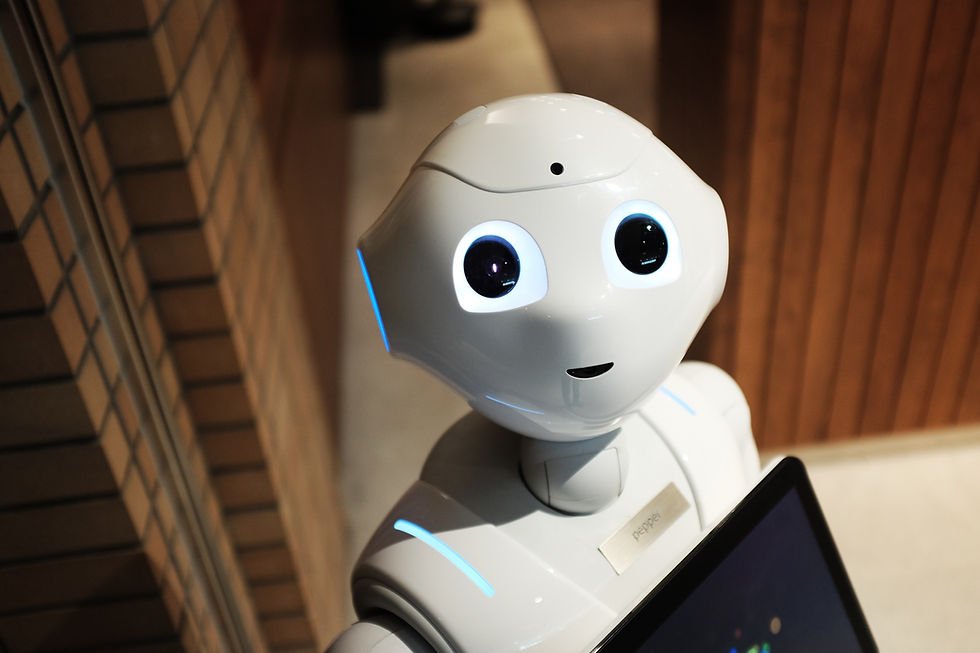AI Can’t Replace the Human Heart: Reflections from a Therapist on Technology and Mental Health
- Kristi Godwin

- Nov 5
- 3 min read

In recent years, artificial intelligence has begun stepping into the world of mental health. Apps, chatbots, and virtual “therapists” now offer instant access to coping tools, guided meditations, and even simulated conversations meant to mirror therapy. For many people, this can feel revolutionary — immediate support, no scheduling conflicts, no judgment, no stigma. And yet, as a therapist, I find myself deeply unsettled.
We are now facing the sobering reality that at least one person has ended their life after engaging in a conversation with AI. This is not just a data point — it’s a human tragedy that underscores the limits of what artificial intelligence can offer when it comes to emotional care. It’s a reminder that connection cannot be programmed.
The Allure of AI Support
There are undeniable benefits to the presence of AI in mental health spaces. AI can provide:
Accessibility: 24/7 availability for individuals in crisis or isolation.
Affordability: Free or low-cost tools for those who can’t afford therapy.
Anonymity: A sense of safety for people who feel ashamed or afraid to open up to another person.
Structure: Practical interventions like journaling prompts, CBT-style reframing, or grounding exercises on demand.
In many ways, AI can function like a digital first-aid kit — a stabilizing resource between therapy sessions or a bridge for those waiting to find a therapist.
But a first-aid kit can’t perform surgery. And an algorithm can’t heal what was broken in relationship — through trauma, neglect, or loss — because healing itself is relational.
Where AI Falls Short
AI lacks what makes therapy transformative: connection, discernment, and human experience. A human therapist doesn’t just process words; we perceive tone, energy, body language, pauses, tears, and silence. We feel the space between words — and that’s where the work often happens. AI, however advanced, can’t attune to those subtleties. It can’t sense dissociation, notice a client’s trembling hands, or gently pause when someone is overwhelmed. It can’t offer genuine empathy, nor can it share the intuitive, compassionate insight that arises from a therapist’s lived experience and years of clinical training. AI operates on data and probability; human beings heal through presence and trust. That is the essence of therapy — not advice, not problem-solving, but relationship.
The Danger of Substituting Relationship for Simulation
When someone turns to AI in a moment of despair, the illusion of companionship can be dangerous.AI can mimic empathy, but it cannot embody it. A human therapist understands not only what is being said but what is at stake — the layers of meaning behind words.
A human clinician can assess risk, reach out, mobilize support systems, and stay grounded in ethical care. AI, on the other hand, is bound by the parameters of its programming. It can generate a soothing message or provide crisis hotline information, but it cannot intervene. It cannot care in the human sense.
When emotional pain meets an algorithm that doesn’t truly understand suffering, the results can be catastrophic.
Moving Forward Responsibly
AI can have a role in mental health — as a tool, not a therapist. Used responsibly, it can complement human therapy by reinforcing coping skills, tracking progress, and expanding access to education. It can offer amazing advice, psychoeducational information, and even emotional support at the touch of a button, anytime, anywhere. That is something needed and valuable for those struggling around the clock, when most therapists work 9-5 only. But we must approach it with discernment. Mental health technology should never blur the line between support and care, nor between simulation and relationship.
As therapists, our task is to remind the world that healing isn’t found in code. It’s found in connection — in the shared humanity of being seen, heard, and held without judgment. No algorithm can replicate that. And no conversation with AI, no matter how responsive, can replace the warmth of a human being saying, “You matter. I’m here with you.”



Comments